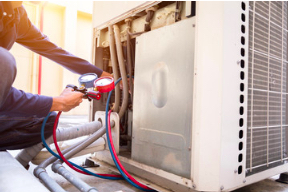 Depending on your air conditioner’s age, Air Conditioning Repair Sherman Oaks cost, and how well you maintain it may make more sense. Here are some questions to ask yourself to help decide:
Depending on your air conditioner’s age, Air Conditioning Repair Sherman Oaks cost, and how well you maintain it may make more sense. Here are some questions to ask yourself to help decide:
While we often think of air pollution as a problem that occurs outdoors, where factories billow smoke or cars spew fumes, it’s important to remember that poor indoor air quality is a serious concern that affects your home as well. According to the Environmental Protection Agency, indoor pollutants are often up to a hundred times more polluted than outside ones, which means that you and your family spend a large portion of your time breathing in contaminated air. This can lead to allergies, sick-building syndrome, and even infection.
Various things can pollute your home’s indoor air, including household cleaners, pet dander and pests. In addition, the toxins released into the air during construction or renovation work can make their way into your home through ventilation and ductwork. Other culprits include volatile organic compounds and radon. The short-term effects of poor indoor air quality include irritation of the respiratory system and sinuses, sore throat, itchy eyes, headache and fatigue. More serious long-term effects may include respiratory diseases, heart disease and cancer. These may not show up until years after exposure or only after prolonged and repeated periods of exposure, but it’s still best to reduce your risk as much as possible.
There are a number of steps you can take to improve your home’s indoor air quality, including opening windows more frequently, using an air purifier and ensuring that your HVAC system is working properly. In addition, you can test the indoor air quality in your home by buying a VOC sensor that will identify levels of harmful compounds in your home’s atmosphere.
While poor indoor air quality is a concern, the good news is that you can take steps to prevent it from getting worse by scheduling regular air conditioning repair. By doing so, you’ll be able to ensure that your family is breathing clean and healthy air at all times. For more information, contact the professionals at Altman’s Cooling & Heating in Titusville. They can inspect your HVAC unit and provide all of the maintenance services you need to keep your home’s indoor air quality as high as possible.
Pests in Your Home
Pests are a common concern for homeowners. They can cause destruction to your property, trigger allergic reactions and asthma, and carry disease-causing bacteria. There are several things you can do to prevent pests from invading your home, such as keeping your house clean, ensuring food is stored in air tight containers, and sealing any cracks or openings in the walls and around incoming and outgoing pipes and vents. If you notice pests in your home, contact a professional immediately.
Rodents and insects are some of the most commonly encountered household pests. These pesky creatures can affect your indoor air quality by contaminating food, droppings, urine and feces. They can also cause damage to your property by chewing through wires and wood. Some pests may bite and sting as well, causing painful, life-threatening allergic reactions.
The most common pests found in homes include rats, mice, cockroaches, fleas and spiders. They all can impact indoor air quality in different ways, but they all require regular maintenance to prevent them from becoming a major problem.
Rats and mice can chew through electrical wires, posing a serious fire risk for your family. These rodents can also spread diseases, such as salmonella and E coli. Cockroaches, on the other hand, are hardy creatures that can survive without food for a month, but will die in less than seven days without water. They can contaminate food, ruin paper and fabric and stain surfaces. They can also cause asthma attacks in people who are allergic to them and trigger eye irritation.
Ants are another nuisance, forming large colonies and infesting your home with their sweet-smelling droppings. They can even suck moisture out of the air, leading to damp areas where mold and mildew will grow.
Spiders are usually harmless, but some species like the brown recluse and black widow can be deadly if they bite you. In addition, most people are allergic to fleas, which can spread throughout your pet’s fur and then onto you and your kids. Thankfully, you can keep fleas at bay by regularly brushing your pets and treating them with preventative medicines.
High Utility Bills
Many homeowners can expect to see a rise in their electric bills during the summer when air conditioning use is at its highest. However, when the increase is much more than usual, it could be a sign that the AC unit needs repair or isn’t working properly. The good news is that there are ways to prevent high utility bills from occurring in the future.
One of the best things you can do to keep your electricity bill as low as possible is to unplug appliances that aren’t in use. Appliances such as television units, refrigerators and lamps that are turned on but not being used can generate their own heat which makes your air conditioner work harder to cool your home. These unnecessary spikes in your energy bills can add up to a huge amount of money wasted and can cause you to pay more for cooling than you should be.
Air filters that aren’t replaced routinely can also lead to a high electricity bill. When they become too dirty, they restrict airflow through the ducts and indoor air handler. This can cause the air conditioner to work harder and longer in order to keep your home cool. This can eventually lead to the motor and compressor overheating and can result in higher electric bills.
Another reason for a high electric bill is that the air conditioner may be too old or improperly installed. If the unit is too small for the home, it will have to run continuously in order to cool it down. This will cause it to burn a lot of electricity and can lead to an expensive bill.
Other reasons for a high electric bill include a leak in the system, a thermostat that isn’t programmed correctly and a failed air conditioner. A leak in the system can result in Freon pouring out of the compressor and can cause it to overheat. A broken thermostat can cause your air conditioner to run constantly and it won’t turn off when the house reaches the desired temperature.
Keeping your air conditioner well-maintained and regularly having it checked by an experienced professional can help you to avoid these problems and keep your energy costs low. A qualified technician will be able to check the unit and recommend coil cleaning, surge protector installation, duct sealing and replacement of the motor among other options that can improve your air conditioning efficiency and decrease your energy costs.
Damage to Your Home
Homeowners insurance typically doesn’t cover AC units unless they are damaged by a covered peril, such as lightning or an earthquake. However, a homeowners insurance policy does usually cover air conditioners that are the result of theft or vandalism. You must file a police report for this type of coverage.
If you’re thinking about filing a homeowners insurance claim to repair your air conditioner, read your homeowner’s insurance policy and contact your insurance company for clarification on the terms of your policy. Often, the best way to save money on a costly repair is to get a home warranty. Home warranties — also known as home repair insurance — often cover the cost of fixing or replacing a variety of appliances and systems, including your air conditioning.
A professional HVAC technician will inspect your unit, make recommendations for any necessary repairs and perform a tune-up. Keeping up with this routine maintenance can help you avoid expensive breakdowns and prolong the life of your system.
Your ductwork is another area that needs regular attention. Dirty ducts can block the flow of air and lead to reduced efficiency and poor indoor air quality. During an inspection, your professional will check to see if the ductwork is properly connected to the outside vents. If it is not, your HVAC pro may be able to repair or replace the ductwork.
Leaking air conditioners are another common problem that can occur with older systems. This can be a sign of damage to the evaporator coils, condensate drain lines or cracked and broken ductwork. If you find a water leak from your air conditioning, turn off the unit, mop up any standing water and use fans to create a cross-current of air. A dehumidifier can help speed up the process of absorbing and drying water.
While you’re addressing a leaky air conditioner, it’s important to have your ductwork repaired. Leaking ducts can lead to moisture problems in the attic and other areas of your home, which can cause wood damage, mold, mildew and poor indoor air quality. A professional HVAC repairman will be able to diagnose and repair any issues with your ductwork, making sure it’s properly connected to the outdoor vents and other parts of your home.
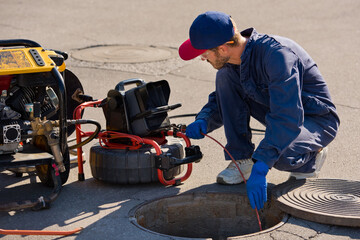
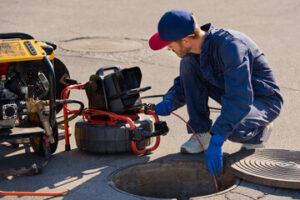
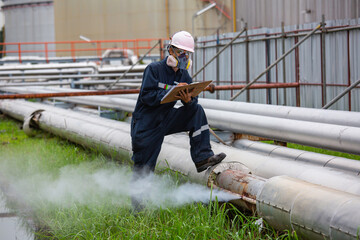
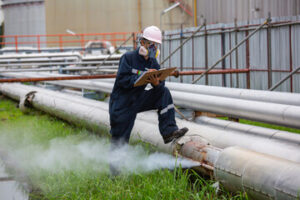



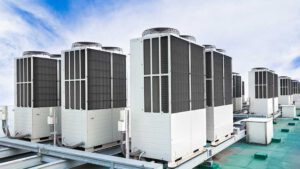

 Processing payroll can be difficult.
Processing payroll can be difficult.